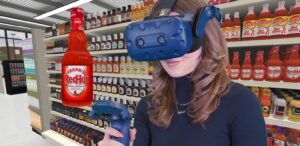7 Key Takeaways from RICE 2023
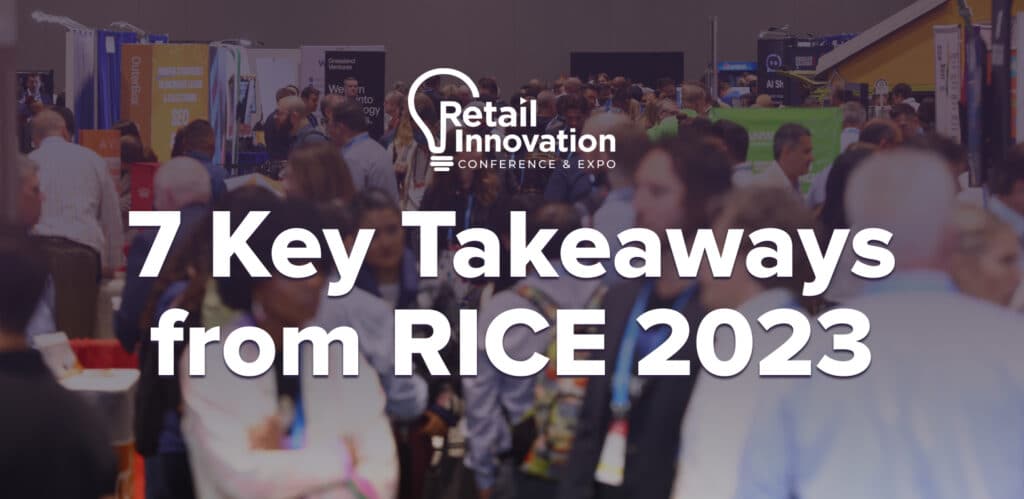
The Retail Innovation Conference & Expo 2023 held in Chicago June 13-15 showcased the latest retail industry trends and insights driving innovation.
With its cutting-edge technology, renowned speakers, influential attendees, and unparalleled networking opportunities, RICE is an event that caters to all. Although ReadySet didn't have a booth at this year's event, we recognized the importance of immersing ourselves in the pulse of the retail industry trends of 2023.
As attendees, we delved into the vibrant atmosphere of RICE which provided us with invaluable insights into the future of retail, unveiling the top 2023 retail trends. In this article, we share the highlights and key ideas from the notable sessions we attended, offering you a glimpse into the exciting and evolving retail trends in 2023.
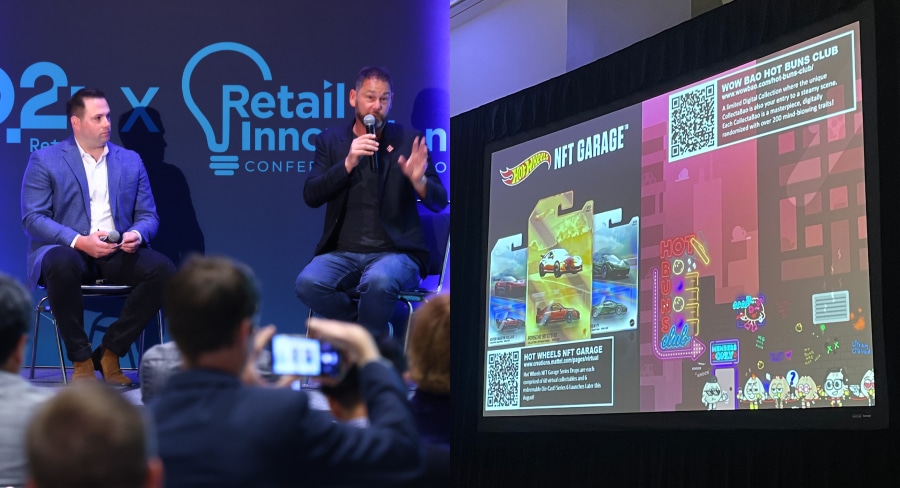
1. Next gen loyalty programs help make consumer decisions easier
Retail loyalty programs play a crucial role in building brand loyalty and driving sustained growth. They make consumers' choices easier and more predictable, leading to enhanced customer satisfaction and long-term engagement.
In today's changing landscape, where third-party food delivery services are on the rise, building trust in the quality and timely delivery of goods and services is vital for fostering loyalty. Loyalty program trends of 2023 go beyond price considerations and offer unique Web3 experiences that can create a strong attachment to the brand.
During the D2 summit at RICE 2023, Geoff Alexander, President & CEO of Wow Bao, discussed how their Web3 loyalty program aims to establish a deep brand loyalty. Web3 loyalty programs are a relatively new concept leveraging collectibles and community-building strategies. Wow Bao, the fast-casual asian ghost-kitchen restaurant, found success through their venture into NFT-based collectibles. Although not yet launched, the potential of community-building in their Web3 loyalty program is another exciting avenue for exploration as adoption continues to grow.
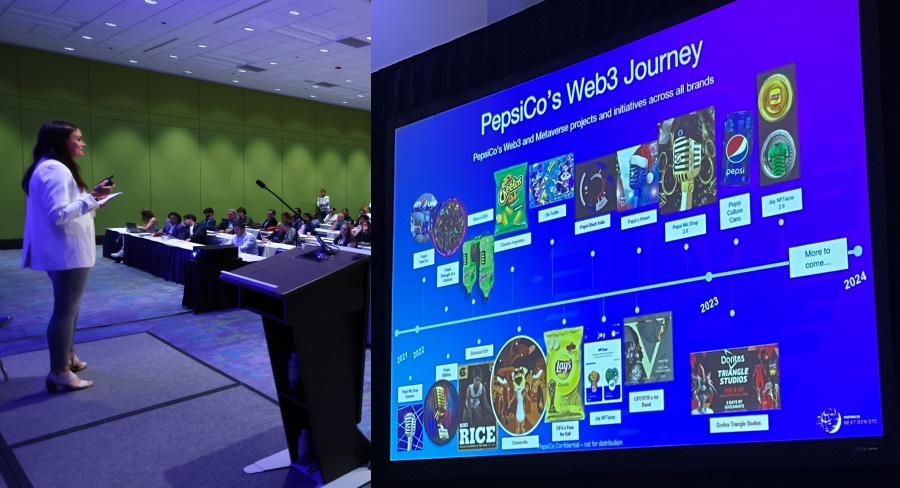
2. Explore opportunities for Web3 brand activations to increase engagement
There are more brands in Web3 showcased during the D2 summit on the first day of the Retail Innovation Conference and Expo that focused on the CPG perspective. Kate Brady, Head of Next Gen DTC Connections & Innovation at PepsiCo described how her team was established a mere 8 months ago. Their mission is to grow consumer lifetime value (CLV) by identifying, developing & scaling new capabilities
The PepsiCo Next Gen DTC Team leverages Web3 activations and first-party data to create engaging experiences for consumers. Their most notable accomplishments being a Cheetos Halloween VR experience and Call of Duty Mountain Dew watch party hosted in Decentraland.
- The Cheetos Halloween-Themed VR experience hosted in Meta Horizon Worlds immersed players in Chesterville, the home of the Cheetos mascot Chester Cheetah where they completed tasks to gain access into a spooky mansion for a chance to vote for their favorite "ghost of Cheetos' past" and help bring a no-longer-available Cheetos flavor back. An experience that garnered 640 million activations.
- Mt. Dew and PepsiCo Labs hosted a virtual watch party for the Call of Duty League (CDL) Major IV in Decentraland. It included a live simulcast in the metaverse of matches between popular Call of Duty League teams, opportunities to get virtual swag, mini-games and a sign up to win a trip for two to the CDL Championship. The metaverse experience kept customers engaged for 14 minutes on average, incredibly high engagement compared to seconds on social media where a larger amount of budget is spent, Kate pointed out.
These examples of brands in the metaverse demonstrate the potential for successful immersive experiences and extended customer interactions. PepsiCo is continuing to innovate and explore opportunities for Web3 brand activations, using these activations to enhance consumer engagement and leverage first-party data.
However, this success is not without its challenges. There is a lack of regulation in the Web3 space and concerns about the authenticity of NFTs (non-fungible tokens). In summary, as the Web3 landscape evolves, addressing regulatory gaps and ensuring the authenticity of digital assets will be critical for sustainable growth.

3. Embrace DTC as a strategic opportunity for connected commerce
The direct-to-consumer (DTC) model has been a contentious topic in the consumer packaged goods (CPG) industry, with many brands struggling to master its complexities and seeing it as a potential disruption to existing retailer relationships. The low margins, high competition, and pre-existing distribution platforms further contribute to the challenges faced by CPG brands.
However, General Mills has taken a different approach. During the CPG Connect Stage at Retail Innovation Conference 2023, Carter Jensen, Senior Manager of Global Commerce at General Mills, shared how they are rethinking the DTC model and leveraging it as a strategic opportunity for their global brands. Recognizing the value of DTC, General Mills aims to power connected commerce and gain consumer data through innovative DTC strategies.
General Mills understands that DTC offers numerous benefits beyond profitability. By embracing the CPG DTC model, they can create connected experiences that provide the shortest and most friction-free path to purchase for consumers. Through agile tools and technology, General Mills has developed scalable and cost-effective solutions, delivering optimized user experiences and unlocking dynamic advertising units. Additionally, DTC enables them to gather valuable first-party data, enhance consumer control, and drive innovation.
The company's unique advantage lies in its mass distribution, pricing, and availability, which they leverage to build new shoppable website pages, implement shoppable technology, and establish a connected product feed. This not only elevates the customer experience with fewer clicks but also improves SEO and provides full-funnel analytics based on first-party data.
Overall, General Mills recommends disproving skeptics by embracing a DTC marketing strategy that extends beyond profitability. Stay focused on creating connected experiences, they do this by leveraging their offline and online strengths to deliver utility and joy for consumers. By embracing DTC as a strategic opportunity, General Mills aims to stay ahead in the rapidly evolving CPG landscape, foster innovation, and strengthen their relationships with consumers.
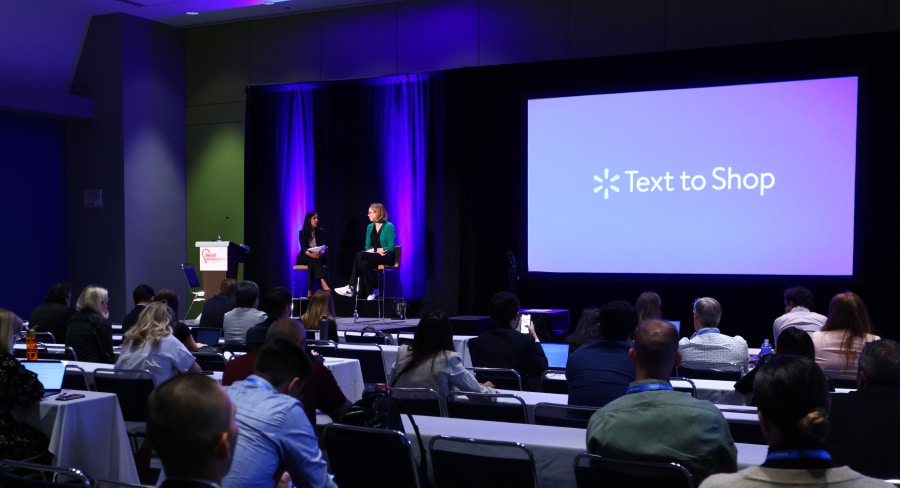
4. Stay relevant through new product innovation and technology adoption
In today's rapidly evolving business landscape, retailers need to continuously adapt to changing consumer preferences, market dynamics, and retail technology trends to remain competitive. By embracing innovation and adopting new technologies, retailers can enhance the customer experience, streamline operations, optimize supply chains, and create unique value propositions.
Jaya Balasubramaniam, Vice President of Walmart's Store No. 8, took the stage at RICE 2023 to discuss how Walmart is building the future of retail and commerce. Store No. 8 serves as a strategic incubator, evaluating opportunities that align with the core business and have the potential to drive revenue and enhance the customer experience. The focus is on two fronts: new business propositions and broad technologies.
New business propositions encompass portfolio companies that drive new revenue and profit streams, leveraging Walmart assets. They assess if it's a Store No. 8 opportunity based on how far we are leaping from our core business. An example of this is Walmart+ InHome, which allows employees to deliver groceries inside customers' homes, enhancing convenience and service.
The new tech side of Store No. 8 aims to improve customer experience or drive operational improvement in the existing business. This area aims to pursue higher-risk, higher-impact opportunities. Examples include immersive technologies and a previous venture called Jetblack, a personal shopping text service that was pivoted from as it did not align with Walmart's strengths, as stated by Jaya.
Although Walmart decided to shutdown Jetblack, the company learned how their customers respond to the ability of ordering by text as well as the type of items they purchase through texting. This data has allowed them to take another approach to conversational commerce, with Walmart Text to Shop. Through use of a customer persona called Taylor, the service has a mission to be a second set of hands that takes on the mental and physical burden of household shopping. Instead of a $50 monthly membership fee like Jetblack, Walmart Text to Shop is easy and accessible by all.
Jaya confirmed that Walmart views Text to Shop as a compliment to their app, website and stores. It has led to consumers adding more items to their cart and not having that “shoot I forgot something” moment (which they have learned came with a really high cost perception). Text to Shop is supported by many of their merchant relationships and although it is not currently aligned with Walmart Connect, the company is excited about the future opportunities for monetization.
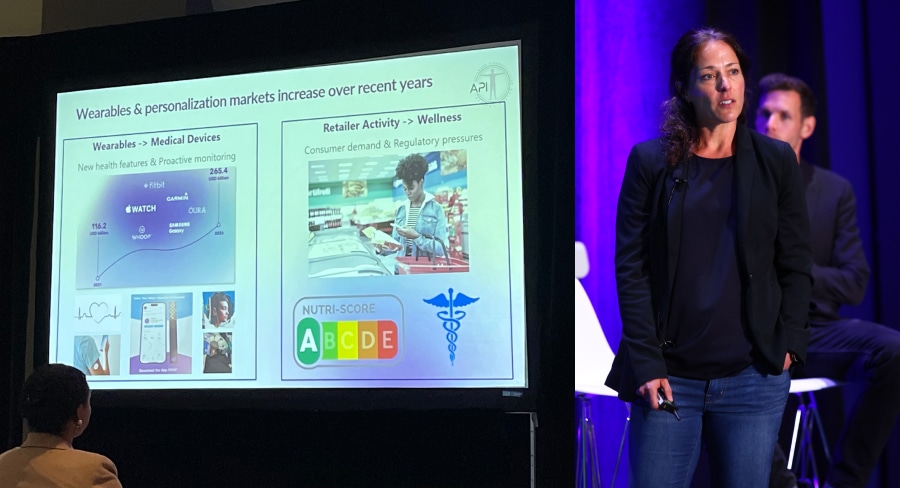
5. Leverage consumer data insights from wearables to create personalized experiences
Leveraging consumer data insights to create personalization in retail has become essential in today's competitive market. By analyzing consumer data, companies can gain valuable insights into individual preferences, behaviors, and purchase history, enabling them to customize product recommendations, marketing messages, and overall shopping experiences to meet the unique needs of customers.
One company at the forefront of retail personalization solutions is PepsiCo, as showcased in the RICE session led by Tristin Brisbois, Director of the Advanced Personalization Ideation (API) Center in Global R&D. The API Center focuses on delivering personalized solutions driven by consumer demand for data-driven insights on their food and beverage choices.
To pilot their personalized initiatives, PepsiCo initially focused on athletes prior to the general population, taking advantage of their health conscious nature and the growing wearables market. They introduced the Gatorade sweat patch, a wearable that measures an athlete's sweat profile during workouts. By scanning the patch within the Gx app, personalized hydration recommendations and product suggestions tailored to the individual's needs are provided.
Tristin emphasized that consumers value data-driven insights that are specific to them, and they are willing to pay a premium for personalized experiences. Additionally, these innovative product offerings help consumers navigate your product portfolio, making their choices more informed and satisfying.
When addressing the question of how to defend personalization R&D work during challenging economic times, Tristin highlighted the importance of staying small and nimble as a team, being resourceful in pilot projects (such as partnering with institutions like Yale instead of relying on expensive agencies), seeking collaborative partnerships, and receiving support from company leaders. These strategies help ensure the continued success and relevance of personalized initiatives, when it is most critical.
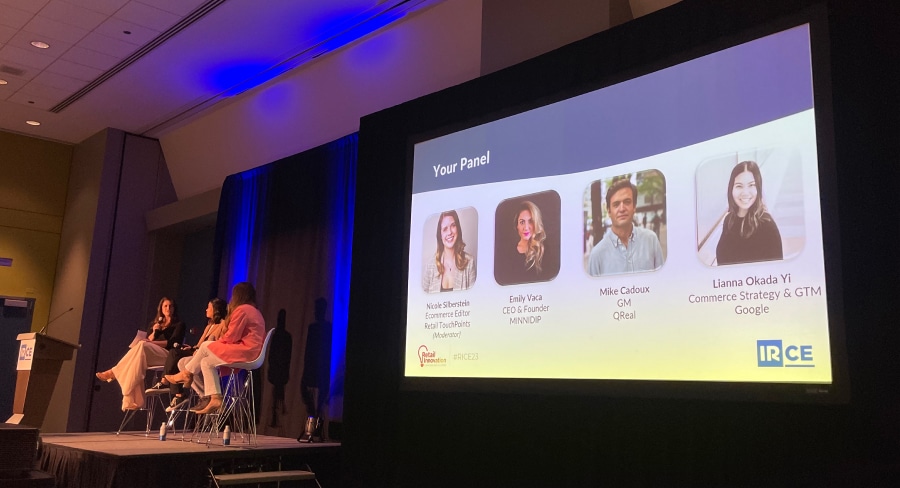
6. Stand out in a crowded marketplace by embracing 3D and AI solutions
In the ever-evolving landscape of digital commerce, businesses are constantly exploring new avenues to enhance their discovery strategies. Maximizing your brand awareness and engagement requires a combination of powerful SEO, PPC, media networks, product data, and social search. During a panel discussion at RICE 2023, industry experts shed light on the significance of leveraging 3D content, augmented reality (AR), and artificial intelligence (AI) to revolutionize the way customers discover and interact with products.
Lianna Okada Yi, Commerce Strategy & GTM at Google, emphasized the importance of relevant content and leveraging 3D and AI in retail. Google's Merchant Center allows businesses to optimize their product listings by incorporating rich media elements such as video, 3D models, and try-on features. Last year 3D models got 50% more engagement than 2D images and this year it is closer to 60%. With an average 19 second dwell time, that far supasses a standard benchmark of 3 seconds. These interactive and immersive experiences not only drive customer engagement but also help decrease returns and increase sales. There was a 450% increase in sales over skus we were focusing on for google.
These numbers indicate that it is likely Google will focus on listings with 3D imagery in the future so getting started now will get you ahead of the game. They are trying to leverage the most useful content to shoppers so you will boost in rankings based on content such as a return policy, shipping cost and seller ratings. As far as content, Google has noticed that products listed with more than one image generate more clicks. A soon to roll out merchant center feature will allow users to remove backgrounds and create lifestyle imagery using AI.
Emily Vaca, CEO and Founder of MINNIDIP, shared her journey of launching a modern designer inflatable pool brand and the evolution of their discovery approach. By capitalizing on social media platforms and organic brand awareness, MINNIDIP gained a loyal following and secured partnerships with major retailers like Target.
The company has since embraced technological advancements, exploring AR and instagram filters for MINNIDIP so people can view how their pools will fit in their spaces. These 3D pool renders not only offer a great resource for customers, but can be used during the design process. Emily uses these 3D models to design and adjust different patterns in real time, instead of using photoshop. It has freed up so much time because she can see what a design will look like in 10 minutes because it shows it accurately with different lighting and angles. If you are already prototyping in 3D, utilizing them to generate fast and cost-effective AI lifestyle imagery is another way to get bang for your buck.
As the industry continues to evolve, the experts discussed the potential of generative AI and its impact on the commerce ecosystem. The panelists acknowledged the challenges associated with the ever-increasing volume of content available online. However, they emphasized that authenticity and brand story remain key differentiators amidst the noise. Ethical and responsible use of technology, combined with a focus on creating unique and genuine experiences, can help businesses stand out in the crowded digital landscape. By embracing these technologies, businesses can create the best content for customers, improve conversion rates, and stay ahead in the highly competitive digital marketplace.
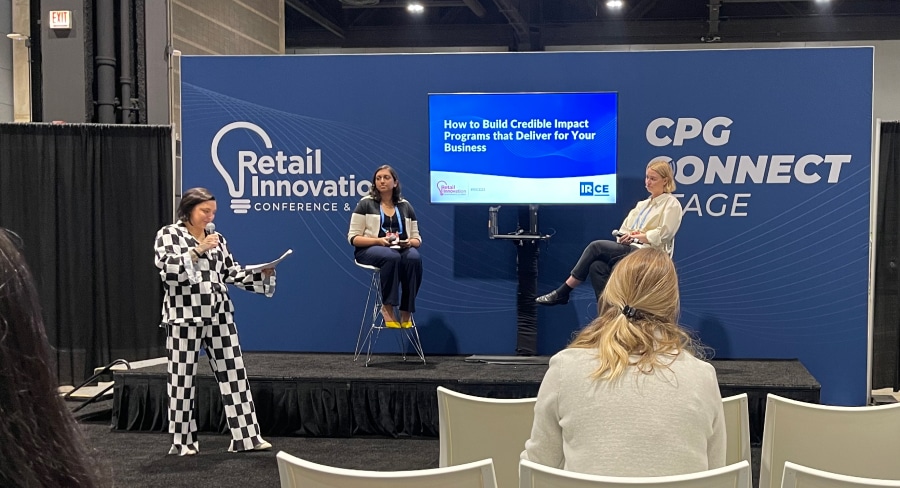
7. Develop sustainability-focused brand impact programs to build credibility
In today's consumer landscape, the demand for ethical and sustainable retail practices has become paramount. Brands are under increasing pressure to invest in initiatives that address climate change, human rights, and health protection. During a session at RICE 2023, Em Gladders, Director of Impact at Ritual, shed light on how businesses, particularly direct-to-consumer (DTC) and consumer packaged goods (CPG), can develop actionable brand impact programs that not only drive positive change but also deliver tangible business results.
The first step in building credible impact programs is to begin internally. It is crucial to identify and prioritize the areas where your brand can make a meaningful difference. This involves aligning impact efforts with the company's values and engaging stakeholders across the organization. By fostering internal alignment and support, companies can ensure a unified approach to CPG sustainability and ethics.
To measure the success of impact programs, Gladders emphasized the importance of using science-backed frameworks recognized by reputable organizations. These frameworks provide strategic guidance and enable brands to track and evaluate the effectiveness of their initiatives. By relying on evidence-based approaches, businesses can demonstrate their commitment to making a real and measurable impact.
One of the specific sustainability goals mentioned was achieving 100% sustainable packaging by 2025. Ritual found that, in some cases, plastic was a more sustainable option compared to glass due to higher recycling rates. Additionally, the company aimed to make the ingredients in their products traceable by publicly disclosing supplier names and the final place of manufacturing by the end of 2022. These concrete actions not only showcase the brand's commitment to transparency but also reduce the risk of customer mistrust and potential brand damage.
Translating impact efforts to the customer both online and in retail is also crucial. Brands need to effectively communicate their sustainability and ethical initiatives to build trust and credibility with consumers. This involves integrating impact messaging into brand storytelling, product packaging, and marketing campaigns. By sharing the journey and progress made towards sustainable and ethical practices, brands can engage customers and create a sense of shared values.
In conclusion, developing sustainable CPG brand strategies is essential for building credibility and meeting the growing expectations of consumers. These are not retail sustainability trends, but better processes to conduct business. They not only strengthen brand reputation but also contribute to a more sustainable and responsible future.
Subscribe to our newsletter
Get our blogs and the latest retail news delivered to your inbox monthly.
Recent Posts
How to Use 3D VR for Smarter Store Layout and Design
Explore how VR is revolutionizing grocery store layout and design planning by offering enhanced blueprint visualization in immersive 3D environments. Grocery store layout strategy is essential for establishing a positive and productive customer experience. A thoughtfully designed layout not only improves convenience but also fosters a sense of discovery, leading to longer, more enjoyable shopping…
Sauce & Condiment Sales Heat Up as New Tech Helps Out
Young Millennials and Gen Z consumers have fueled a boom in hot sauce trends and condiment sales. This surge is pushing leading brands and retailers to elevate their game with smarter virtual product innovation and assortment optimization. The condiment and hot sauce industry is thriving in 2024, driven by evolving consumer tastes and the growing…
Candy, Bar, and Snack Industry use VR to Keep Up with Consumers
Discover the snack trends of 2024 that are pushing the snack bar market and candy industry to innovate and evolve using cutting-edge technology. The Convenience Store News 2024 Industry Deep Dive revealed numerous snack food industry trends, highlighting a shift toward healthier snacking options and a growing preference for savory flavors. As various snack categories…


